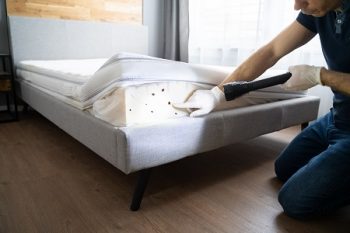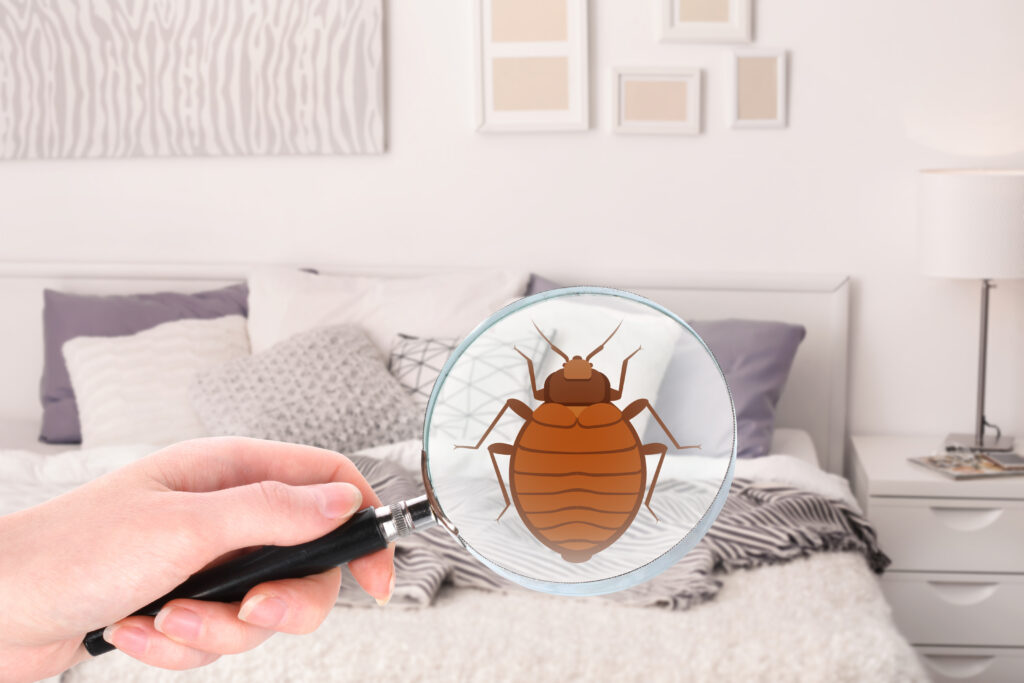Professional Philly Pest Control for Bed Bugs in Philadelphia: Obtain Reputable Exterminator Providers
Professional Philly Pest Control for Bed Bugs in Philadelphia: Obtain Reputable Exterminator Providers
Blog Article
The Development of Insect Control Solutions: Modern Techniques for a Pest-Free Home
In the world of household maintenance, the monitoring of insects has actually gone through a considerable change over the years, adjusting to new challenges and innovations in modern technology. From standard bug control techniques to the development of green remedies, the development of insect administration solutions has been marked by a continuous quest for much more effective and sustainable techniques. With the integration of modern pest discovery innovations and innovative exclusion approaches, the quest of a pest-free home has developed into an innovative blend of scientific research and technique. The most appealing facet exists in the contemporary method of incorporated parasite monitoring, an alternative method that guarantees a comprehensive service to pest control.
Historic Bug Control Approaches
Throughout history, parasite control techniques have developed substantially from fundamental methods to much more innovative methods. In ancient civilizations, individuals made use of all-natural treatments such as growing particular natural herbs to hinder insects or using felines to capture rodents. The initial videotaped use chemicals for parasite control dates back to around 2500 BC in Sumeria, where sulfur compounds were made use of to fumigate homes. The Chinese also developed very early kinds of insecticides making use of arsenic and mercury around 1000 BC.
Throughout the Middle Ages, cats were extremely valued for their parasite control abilities, causing the widespread domestication of these pets. The bubonic plague outbreak in Europe during the 14th century triggered the execution of public health and wellness steps to control fleas and rats, the providers of the disease. With the commercial revolution came improvements in parasite control, consisting of the innovation of the very first chemical, pyrethrum, in the very early 19th century. These historic techniques established the foundation for the advanced insect control approaches we depend on today.
Appearance of Eco-Friendly Solutions
Recently, there has been a notable shift towards the adoption of environmentally friendly services in the field of pest control. This activity originates from raising recognition of the ecological effect of standard bug control techniques, which usually entail making use of dangerous chemicals that can present risks to human health, non-target varieties, and ecosystems. Green pest control remedies focus on the usage of natural, safe choices to properly handle bug populations while decreasing injury to the environment.
One key aspect of eco-friendly pest control is the implementation of integrated insect management (IPM) approaches. IPM concentrates on preventing and managing bugs via a mix of strategies such as biological control, habitat adjustment, and making use of green products like herb pesticides. By targeting the origin triggers of pest infestations and utilizing sustainable practices, environment-friendly pest control techniques offer long-lasting remedies that are both eco responsible and effective.

Development of Parasite Discovery Innovation
Advancing at a fast pace, parasite detection modern technology has actually gone through considerable advancement in the last few years, reinventing the method insect control services operate. Typical approaches of parasite detection, such as visual assessments and lure catches, have been supplemented or changed by even more effective and ingenious innovations. Among the most notable innovations is using infrared cams and thermal imaging to spot bugs concealed within wall surfaces, ceilings, or various other structural aspects. These innovations can recognize heat signatures emitted by pests, providing insect control professionals with useful information on problem areas without the demand for intrusive actions.
These gadgets can find changes in temperature, moisture degrees, and even pest motions, notifying home owners or parasite control companies to prospective issues immediately. Generally, the advancement of bug discovery innovation has dramatically improved the effectiveness and precision of insect control services, helping to ensure pest-free atmospheres for residential or commercial property proprietors.
Modern Bug Exclusion Techniques
The evolution of parasite detection modern technology has led the way for the implementation of modern-day pest exemption strategies, boosting the thorough approach to pest control solutions. Modern pest exemption strategies concentrate on preventing bugs from getting in structures as opposed to managing problems after they take place. One secret technique is sealing entry points such as voids around windows and doors, vents, pipes, and cracks in walls to deny pests access to indoor spaces. Setting up door moves, displays, and mesh barriers can likewise efficiently obstruct their access. Furthermore, making use of fine-mesh metal displays on smokeshafts and vents avoids bugs like rats and birds from penetrating structures. Utilizing methods such as caulking, weatherstripping, and mounting barriers like wire mesh during building and construction or remodelling can substantially reduce the danger of parasite breach. By proactively excluding house owners, services and bugs can create a more resistant protection against problems, advertising a pest-free atmosphere and decreasing the requirement for extensive insect control actions.
Integrated Parasite Management Methods

Surveillance is one more important component of IPM, allowing early detection of parasite activity and permitting for prompt treatment. When pests are identified, control methods are applied based on the certain pest species and the degree of the problem.
Final Thought
To conclude, the development of parasite control services has caused the development of more ecologically friendly and efficient methods for preserving a pest-free home. From standard approaches to modern-day technologies, the market has actually made considerable developments in bug detection, exclusion, and management. By including incorporated parasite monitoring strategies, house owners can now gain from a detailed method to keeping insects at bay, making certain a safe and healthy and balanced living environment.
These tools can detect adjustments in temperature level, humidity levels, and even pest motions, informing house owners or insect control firms to potential issues promptly. Generally, the evolution of parasite detection innovation has significantly boosted the effectiveness and accuracy of parasite control solutions, aiding to make sure pest-free environments for residential or commercial property owners.
The development of parasite discovery innovation has paved the way for the implementation of modern insect exemption techniques, improving the detailed approach to pest control solutions.Integrated Pest Management Techniques entail an alternative approach to pest control that highlights prevention, control, and monitoring techniques to successfully handle insect populaces (philly pest control in philadelphia bed bugs). Once bugs are identified, control approaches are carried out based on the details insect varieties and the level of the infestation
Report this page